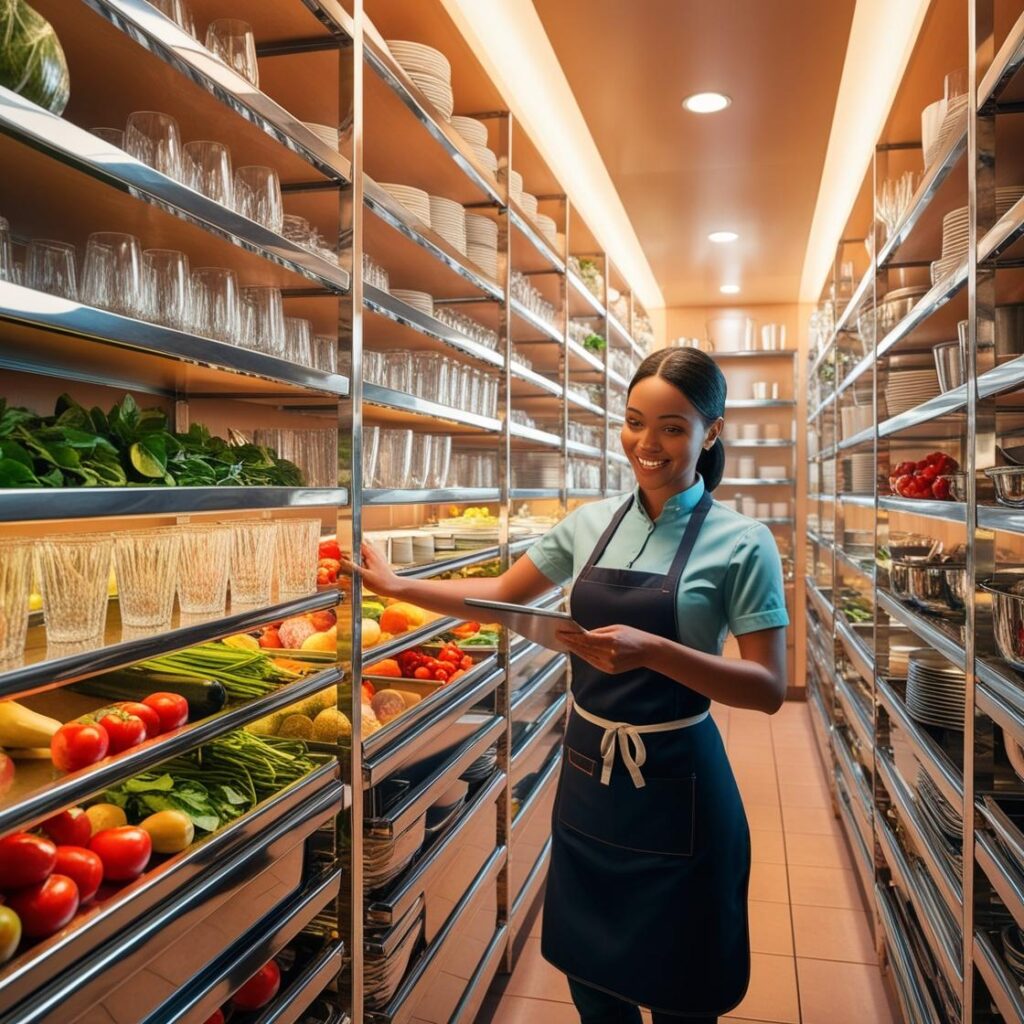Running a profitable restaurant requires more than attracting customers—it involves carefully managing expenses to maximize your bottom line. Cost control is a critical aspect of restaurant management, ensuring that every dollar is spent efficiently. In this article, we’ll explore effective strategies to help you reduce costs while maintaining quality and customer satisfaction.
1. Optimize Your Inventory Management
Inventory is one of the largest expenses for restaurants. Mismanagement can lead to food waste, overstocking, or running out of key ingredients.
How to Do It:
- Conduct regular inventory audits: Track your inventory weekly or bi-weekly to identify trends and prevent over-ordering.
- Use a first-in, first-out system (FIFO): Ensure older stock is used before newer deliveries to minimize spoilage.
- Invest in inventory software: Use digital tools to automate tracking, monitor usage, and forecast future needs.

2. Reduce Food Waste
Food waste can significantly impact your costs. Minimizing waste helps you save money and demonstrates a commitment to sustainability.
How to Do It:
- Portion control: Train staff to serve consistent portions to reduce waste and maintain food costs.
- Repurpose ingredients: Create specials or menu items that use leftover ingredients, such as soups, sauces, or desserts.
- Analyze waste patterns: Track what gets thrown away and adjust recipes or ordering habits accordingly.
3. Streamline Labor Costs
Labor is another major expense for restaurants, but it can be optimized without sacrificing service quality.
How to Do It:
- Schedule smartly: Use historical data to forecast busy and slow periods, ensuring you have the right number of staff at the right times.
- Cross-train employees: Equip staff with multiple skills, allowing them to fill in different roles as needed.
- Monitor overtime: Keep a close eye on overtime hours to prevent unnecessary labor costs.
4. Negotiate with Vendors
Building strong relationships with your vendors can help you secure better pricing and terms for your supplies.
How to Do It:
- Request bulk discounts: Order larger quantities of non-perishable items to take advantage of lower rates.
- Compare supplier prices: Regularly review vendor options to ensure you’re getting the best deals.
- Build long-term partnerships: Loyal relationships with vendors can lead to better service, faster delivery, and occasional discounts.
5. Monitor Energy Consumption
Energy costs can quietly drain your budget. Implementing energy-saving measures can lead to significant long-term savings.
How to Do It:
- Upgrade to energy-efficient equipment: Invest in energy-saving appliances and lighting to reduce utility bills.
- Perform regular maintenance: Ensure kitchen equipment is running efficiently to avoid unnecessary energy consumption.
- Encourage energy-saving habits: Train staff to turn off equipment when not in use and use water wisely.
6. Simplify Your Menu
A streamlined menu reduces food waste, lowers inventory costs, and simplifies kitchen operations.
How to Do It:
- Focus on best-sellers: Analyze sales data to identify popular items and eliminate slow-moving dishes.
- Use overlapping ingredients: Design your menu to include items that share common ingredients to minimize waste.
- Introduce seasonal menus: Use seasonal ingredients to keep costs low and maintain a fresh menu.
7. Evaluate Your Pricing Strategy
Pricing directly impacts your profit margins. Ensure your menu prices reflect the true cost of ingredients and labor.
How to Do It:
- Calculate food cost percentage: Aim for a food cost percentage between 28-35% to ensure profitability.
- Test price adjustments: Gradually raise prices on high-demand items to see how customers respond.
- Offer upsells and bundles: Encourage customers to spend more through combo deals or premium upgrades.
8. Leverage Technology for Efficiency
Modern tools can help you automate processes and reduce manual errors, saving both time and money.
How to Do It:
- Use POS systems: Implement a POS system to track sales, monitor inventory, and analyze performance metrics.
- Automate reservations: Use online reservation platforms to manage table bookings more efficiently.
- Streamline payroll: Utilize payroll software to simplify scheduling, tracking, and payments.
Conclusion
Effective cost control requires a combination of smart planning, strategic partnerships, and a commitment to efficiency. By implementing these strategies, you can reduce expenses, boost profits, and ensure long-term success for your restaurant.
Need help optimizing your restaurant’s operations? Contact Restaurant Secret Hacks offers expert consulting and resources to help your restaurant thrive. Claim your FREE strategy here!
Tags:
- Restaurant cost management
- Reducing food waste
- Inventory management tips
- Labor cost optimization
- Restaurant profitability strategies
- Energy-saving tips for restaurants
- Menu engineering
Hashtags:
#RestaurantManagement #CostControl #RestaurantProfits #InventoryTips #LaborCostSavings #FoodWasteReduction #EnergyEfficiency #MenuOptimization #ProfitabilityStrategies



